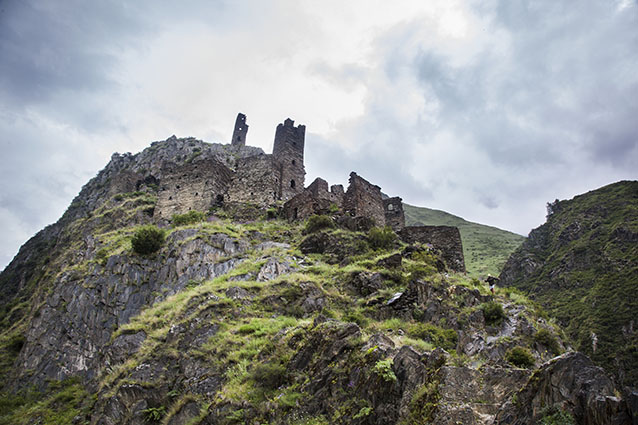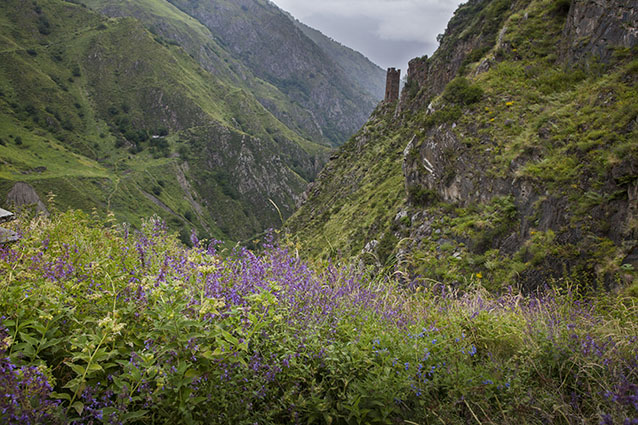Experts restore crumbling Mutso village in mountainous Georgia

A unique medieval village near Georgia's north-east border is being restored so visitors can enjoy the historic settlement and the picturesque landscape.
Located high in the mountains of the Khevsureti region, Mutso village lies 120km north-east of Dusheti administrative centre and is perched 1880m above sea level.
While being difficult to access, the village has retained its original architecture and has been a popular destination for hikers and enthusiasts from all over the globe.

The miniature village was built on terraces situated on rock formations. Photo by N. Alavidze/Agenda.ge.
The small village features around 30 fortified structures and four defensive towers arranged on three vertical terraces above the Mutso-Ardoti Valley.
The fortified community served as the protective gate to Khevsureti and, according to legend, was never conquered by invading forces.
The remote village was almost completely deserted a century ago while more recently the remaining residents slowly vacated the village in search for more opportunities closer to the city.

Tourists are welcome to visit the village, which will soon undergo vital restoration to preserve the settlement.. Photo by N. Alavidze/Agenda.ge.
In last few decades Mutso was completely abandoned. It is now home to only one resident, who returned after hearing about the intensive restoration works that have been ongoing there for the past three years.
Governmental rehabilitation of the village was first initiated in 2004, but practical works only began a decade later.
Now experts focused on repairing and rebuilding the three terraces comprising the village, with the lower-most section brought back to life in 2015.

Mutso is located in Georgia's extreme north-east.
The middle terrace was the subject of renovation works this year, while the third and highest part of the former settlement is expected to receive much-needed attention in 2017.
The experts involved in the restoration said they only used locally obtained stones and clay in rehabilitation efforts, with some of the crumbling buildings being completely dismantled and rebuilt.
 Tweet
Tweet  Share
Share